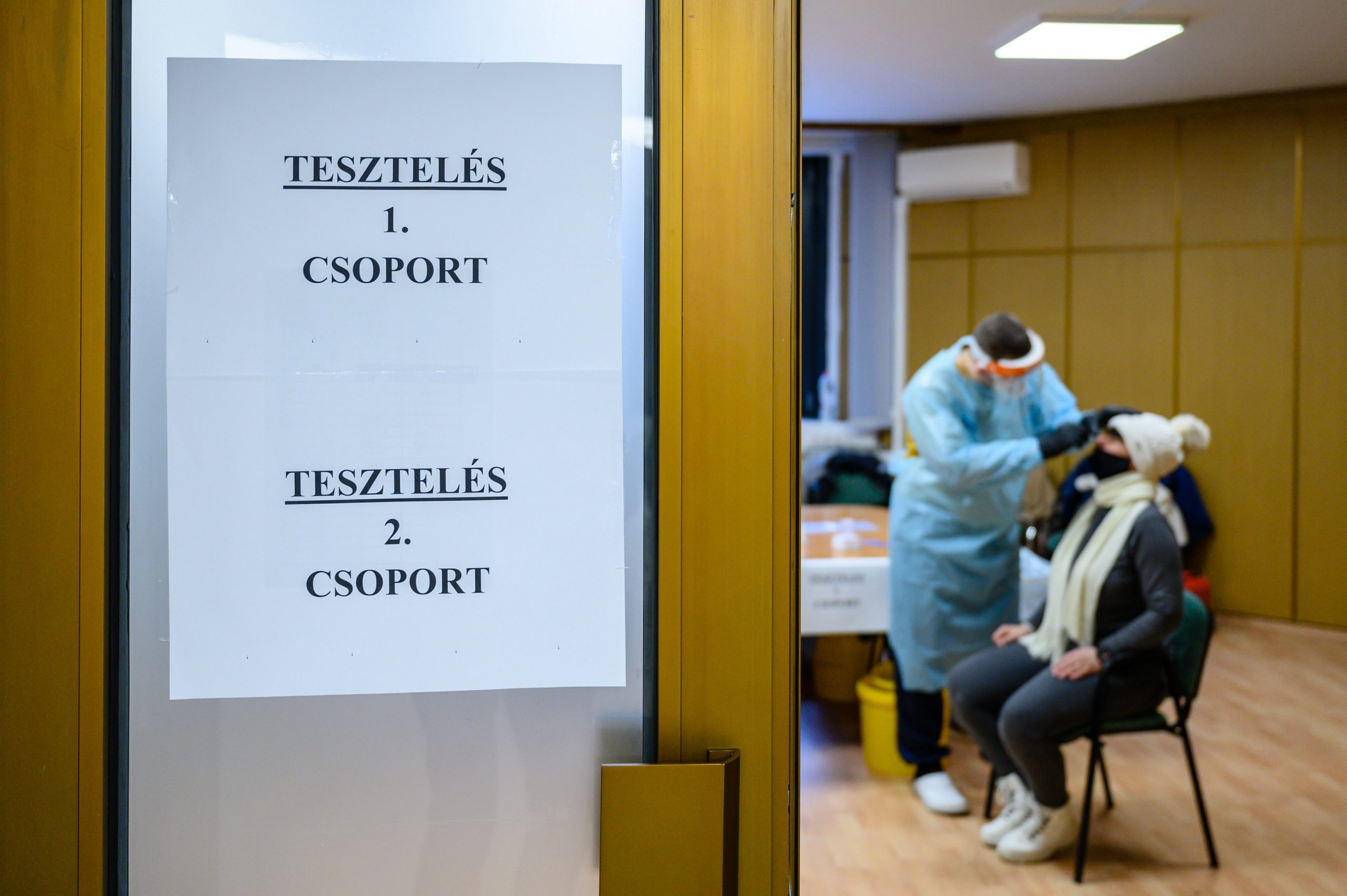
"It is difficult to predict, however, when another wave of coronavirus outbreaks could arrive in Hungary," immunologist Imre Kaskovics said.Continue reading

The epidemic never really disappeared, but by the third year people had gotten used to it, especially as the Ukrainian war broke out and monkeypox arrived in Hungary as well. The relative calm regarding the coronavirus now seems to be changing with the emergence of new variants, Telex reports.
In Western Europe, the coronavirus epidemic has been on the rise again for weeks, with several countries clearly experiencing a new wave, as has the United States. In some countries, the new waves have already passed, we are still at the beginning of the process here. In Hungary, after the wave at the beginning of the year subsided, the National Public Health Center (NNK) switched to once-weekly reporting, with infection rates first starting to rise in mid-June and continuing to rise since then.
In addition to the weekly data release, the fact that although central testing has not been particularly widespread in Hungary, the use of home antigen rapid tests and voluntary isolation (if someone is found to be infected at all) has become more prevalent, making it difficult to evaluate the Hungarian data, so only a fraction of infected people are included in the statistics. However, the trend is clear: the epidemic is making a comeback.
However, Hans Kluge, WHO Regional Director for Europe, recently said that the virus never really went away:
Don’t take your eyes off the ball. The virus has never gone away. It’s spreading. It’s mutating. – My interview with @Reuters yesterday. https://t.co/niGKeUcwnc
— Hans Kluge (@hans_kluge) July 20, 2022
“The virus, because it is allowed to spread around the world at a significant rate, and because vaccination coverage is inadequate in most poor countries, is able to produce new variants much faster than expected. […] Their main feature is that they tend to outcompete their predecessors by slightly more than our so-called neutralizing antibodies, which are the first line of defense, and to put it simply, are mainly used to protect against infection. […] As the neutralizing antibodies are better evaded, the protection against infection decreases, they are more able to infect/spread and the number of reinfections increases – they are able to start a new wave regardless of other factors (e.g. weather)”, wrote Gábor Kemenesi, a virologist at the University of Pécs, National Laboratory of Virology.
With BA.4 and BA.5 now the most prevalent variants, the number of patients requiring hospitalization has also started to rise again, but – although it is not yet known how long it will continue to rise – it is still well below the number of patients hospitalized in the waves before omicron emerged.
The BA.5 variant wave in Europe and the US is leading to increased hospitalizations, without a proportionate increase in ICU admissions or deaths https://t.co/KqLsIdUWou by @SarahNev @jburnmurdoch pic.twitter.com/CnNfQRbKLx
— Eric Topol (@EricTopol) July 10, 2022
The fifth wave at the beginning of the year was caused by omicron, which caused less severe disease, but spread faster than ever before and was less effective in terms of immune protection and vaccination. The new virus variants that have emerged since then are all related to it and can be seen as different sub-variants of omicron. The ‘original’ omicron was later named BA.1, but BA.2, which spread even faster than it, soon appeared. Since then, BA.2.12.1 swept across the United States in the spring, and now BA.4 and especially BA.5 are fuelling the surge in the number of cases.
BA.5 not only spreads faster, but is less resistant to vaccination, antibody treatment, and previous infection, and also suppresses the innate immune system better than earlier variants. Symptoms are broadly similar to those of the earlier variants, although it has been suggested that it may cause more frequent headaches and that it may again cause more frequent loss of sense of smell and taste, which became more severe with the arrival of omicron. There is no evidence that it causes more serious illness. Yet, the renowned American researcher Eric Topol wrote that “the Omicron sub-variant BA.5 is the worst version of the virus that we’ve seen.”
It is important to note, however, that this in itself does not tell us what to expect in the coming months, as we are increasingly prepared to face the epidemic: the worst variant is not expected to bring the worst wave, because it will face more resistance than before.
We know very little about the proportion of variants present in Hungary and how this varies, because there is virtually no systematic epidemiological monitoring system in Hungary, i.e. there is hardly any data available. Cecília Müller, the national chief medical officer, said last week that BA.4, BA.5, and variant X are already present in Hungary, but only in 4-5% of samples, BA.2 is still the dominant variant in our country. (There is no variant called X, Müller probably meant XE, which is the result of the recombination of BA.1 and BA.2).
It is also important to note that omicron infection does not really provide strong protection against re-infection, with newer sub-variants being at least as effective in bypassing it as vaccines are in protecting against infection.
The good news is that reinfections typically have milder symptoms than first infections. However, by helping to spread the virus, they can also help to deliver it to at-risk groups – the elderly, and the chronically ill – whose more vulnerable members may be at risk of death from new variants. Plus, the more the virus is spread, even re-transmitted, the greater the chance it has to mutate further and create new variants.
So the omicron and its descendants have indeed caused fewer serious cases, thanks in part to the higher immunity in the population. However, they have not brought an end to the epidemic, because their mutations have made the virus even more effective in spreading.
Cellular immunity, which plays a key role in protecting against more severe diseases, is much less affected by mutations in omicron variants. Therefore, vaccines continue to perform their primary function of protecting against serious disease and thus death with good efficacy, but this requires at least three doses. Booster vaccines can usually also reverse the decline in immunity over time, but they only provide significant protection against the omicron variants in the first place.
Although a fourth vaccination is available in Hungary, there is a recommendation issued by the NNK that anyone can request a fourth dose on the recommendation of their doctor if at least four months have passed since the third dose. However, the government and the authorities have since then tended to communicate that the fourth dose is recommended primarily for the elderly, the immunocompromised, and the chronically ill. These narrower groups are well advised to be vaccinated with the second booster dose: several studies show that a fourth vaccination significantly reduces the risk of death in the elderly. It is not clear, however, when they should get it.
Should I wait for the updated vaccine? In short: no! The first generation COVID-19 vaccines already perform very well against this serious condition, so take the scientifically and professionally prescribed doses,”
recommended Gábor Kemenesi. In addition to vaccination, masking, regular ventilation, and testing may still be important.
There is a strong likelihood that another wave will arrive in the autumn. But the next waves, and the evolution of the epidemic in general, will depend largely on the emergence of new variants, the pace at which they emerge, how quickly they are identified, and how effectively we monitor their spread.
Source: Telex
Featured image: illustration via Tamás Vasvári/MTI